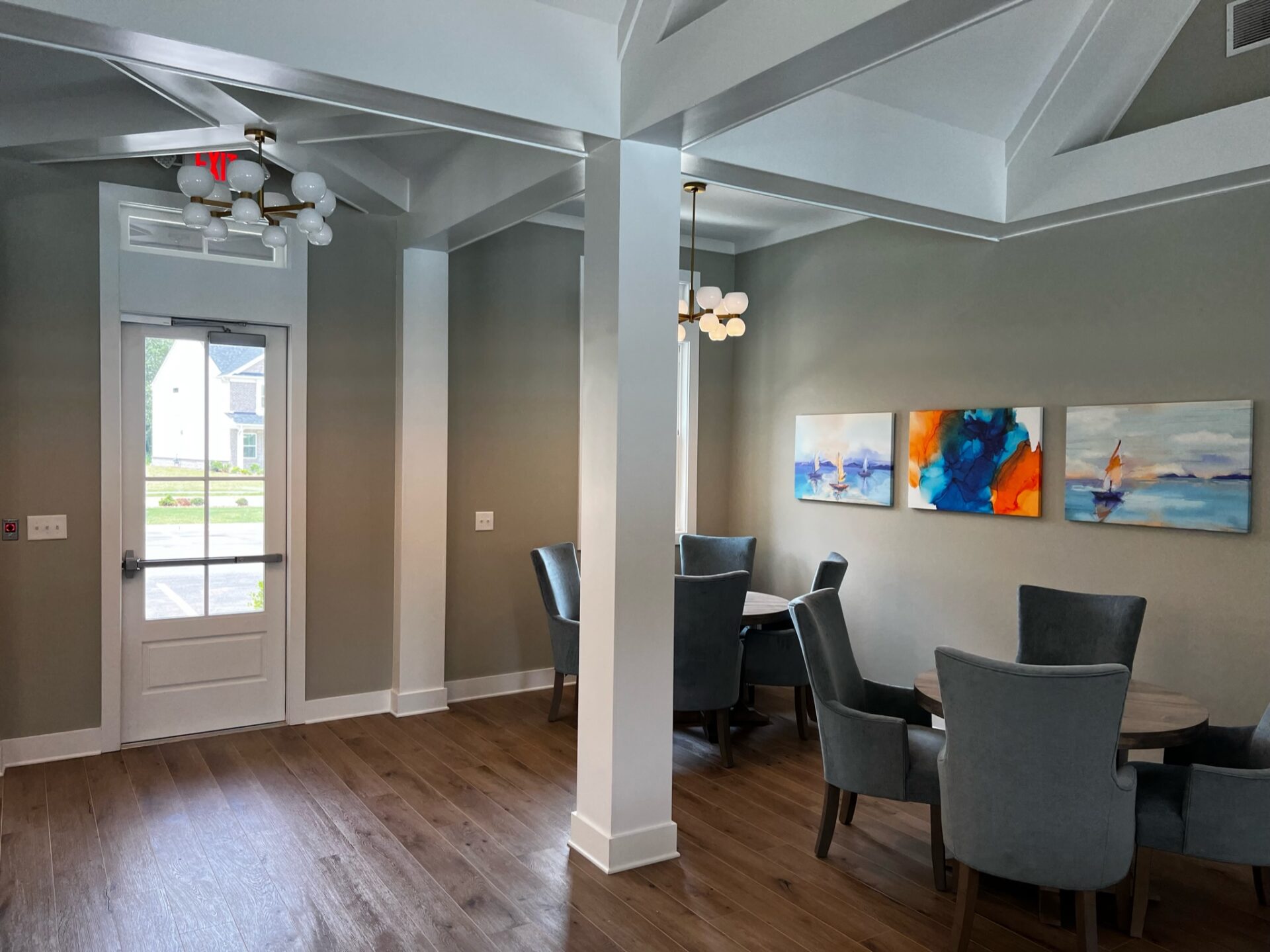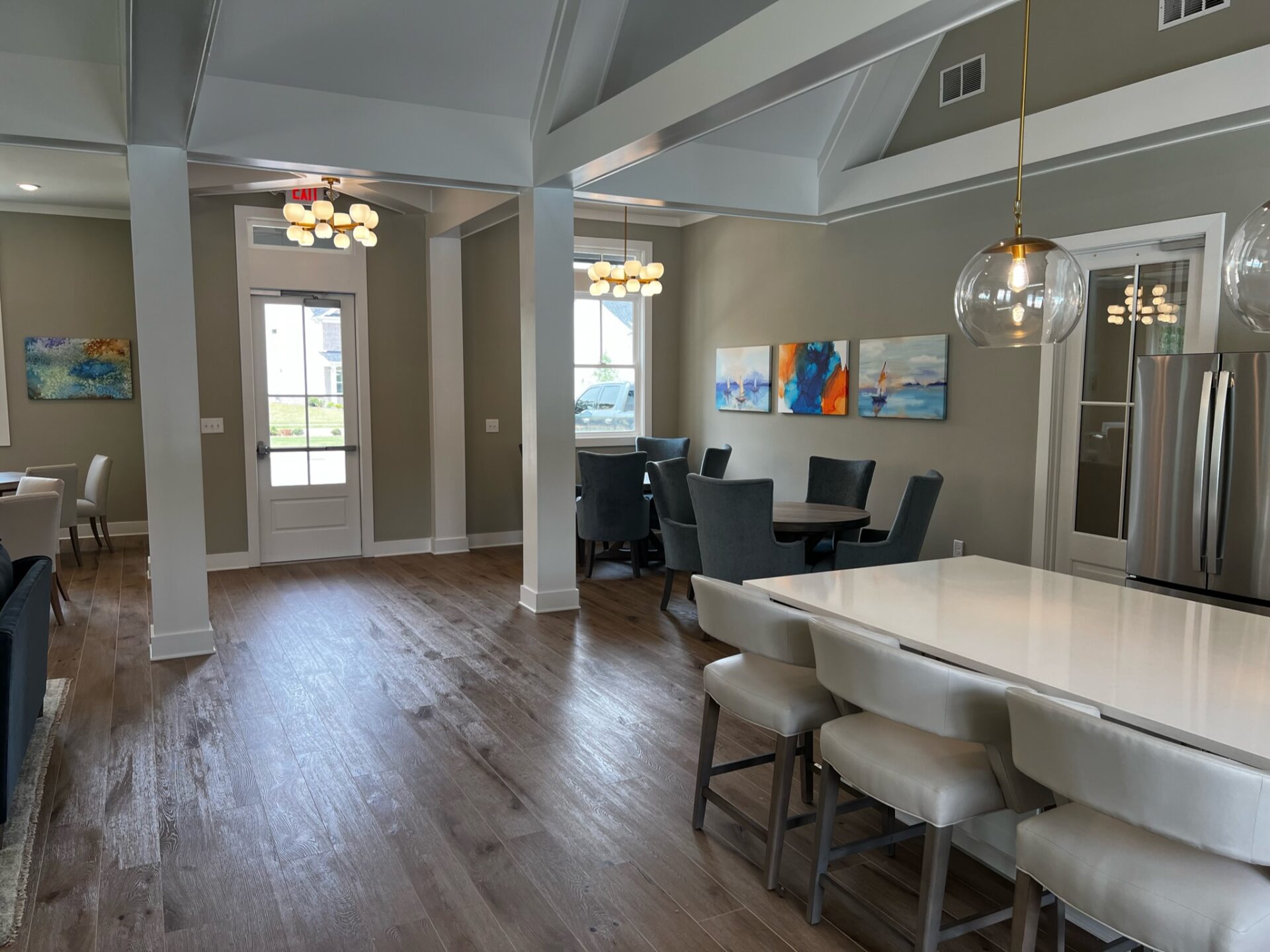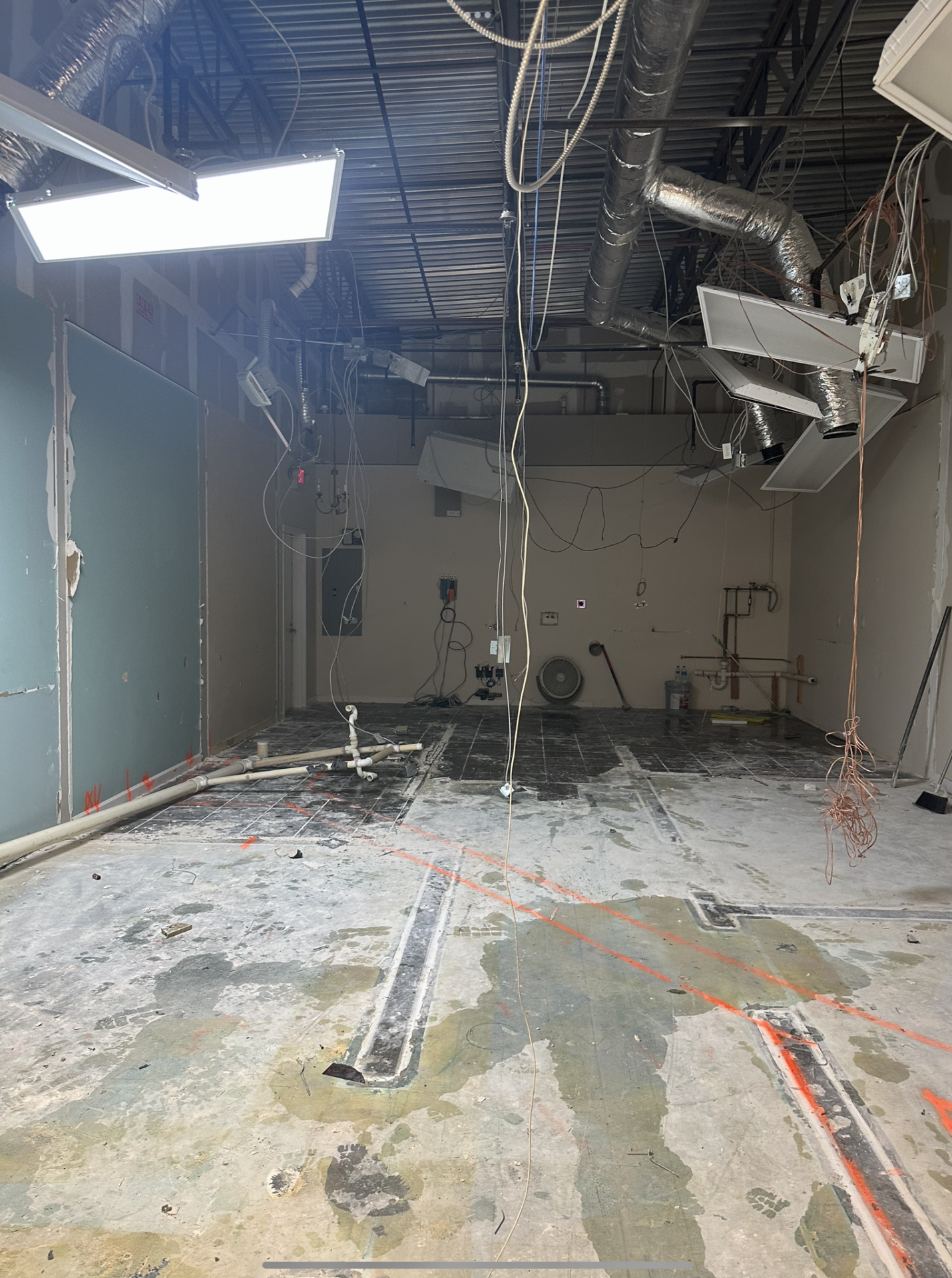Introduction
Creating an efficient office space is key to boosting productivity and morale. By carefully considering design elements, businesses can foster an environment where creativity and efficiency thrive. A well-designed office is more than just furniture and walls; it’s about crafting a space that supports the diverse needs of your team.
An office layout that balances open spaces and private areas can enhance both collaboration and individual focus. Natural elements like light and greenery improve air quality and mood, making the workplace more inviting. Technology is another crucial factor. With smart desks and integrated communication systems, daily tasks become streamlined, allowing teams to work more effectively.
Comfort shouldn’t be overlooked. From choosing ergonomic chairs to managing noise levels, every detail contributes to creating a workplace where employees feel at ease. When employees are comfortable, they are more likely to be productive and engaged. These thoughtful design choices not only improve daily operations but also create a space where employees can excel and enjoy coming to work.
Optimizing Layouts for Efficiency
Open Plan vs. Private Offices
Choosing between open plan and private offices can significantly impact productivity. Open-plan offices foster collaboration, making it easy for team members to share ideas and work together seamlessly. These spaces encourage interaction and can lead to creative, innovative solutions. However, open plans may come with distractions due to noise and a lack of privacy.
Private offices provide quiet, focused spaces for tasks that require concentration. They minimize distractions and are ideal for confidential discussions. The challenge with private offices is that they can hinder communication among team members and create silos.
A balanced approach is often the most effective. Consider creating zones within your office, with open areas for teamwork and private nooks or rooms for focused work. This setup allows flexibility and can cater to different working styles. Using modular furniture or movable partitions can also help in optimizing space based on day-to-day needs.
Flexible Space for Collaboration
Flexibility is key in creating collaborative spaces. By designing areas that can be easily reconfigured, you enable the office environment to adapt to various tasks. These spaces can accommodate team meetings, brainstorming sessions, or informal gatherings.
Consider these features for more flexible workspaces:
- Modular Furniture: Pieces that can be moved and rearranged provide the adaptability needed for different tasks.
- Whiteboards and Screens: Easy access to these tools encourages spontaneous idea sharing and enhances group work sessions.
- Comfortable Seating: Ergonomic seating setups ensure comfort, even during longer brainstorming sessions.
- Multipurpose Rooms: Spaces that can serve as meeting rooms, quiet zones, or break areas offer versatility without needing excessive remodeling.
Incorporating these elements creates an environment that encourages collaboration while maintaining a sense of individuality when necessary. This balance helps maximize productivity by letting employees switch seamlessly between tasks that require focus and those that benefit from teamwork.
Incorporating Natural Elements
Importance of Natural Light
Natural light plays a crucial role in an office’s productivity. Exposure to natural light improves mood, energy levels, and overall well-being. Employees tend to feel more alert and focused, leading to higher productivity rates. It also reduces eye strain and headaches associated with artificial lighting.
To maximize natural light in the office, consider these strategies:
- Position Workspaces Near Windows: Place desks where they can benefit from daylight.
- Use Glass Dividers: They allow light to flow through the office, minimizing dark spots.
- Choose Light Paint Colors: Lighter shades reflect sunlight, enhancing the brightness of the space.
These adjustments not only improve ambiance but also contribute to sustainability by reducing the need for artificial lighting during the day.
Incorporating Indoor Plants
Indoor plants are more than just decorative elements. They improve air quality, reduce stress, and increase happiness among employees. Plants like spider plants, snake plants, and pothos are excellent choices as they require minimal maintenance and thrive in various lighting conditions.
Consider adding plants in these areas:
- Workstations: Small desk plants can personalize workspaces and boost mood.
- Common Areas: Larger plants in lobbies or break rooms create a welcoming atmosphere.
- Window Sills: Placing plants here can enhance views and bring a bit of nature indoors.
Introducing greenery into the office environment contributes to a sense of tranquility, making spaces feel more welcoming and less sterile. This shift not only benefits employees’ health but also adds an element of beauty to the office design.
Utilizing Technology for Productivity
Smart Desks and Equipment
Smart technology is transforming office environments, making them more efficient and user-friendly. Smart desks equipped with adjustable height settings allow employees to switch between sitting and standing. This flexibility promotes better posture and decreases fatigue. Some smart desks come with integrated charging stations and sensor technology to track usage patterns, helping optimize energy use.
Other equipment, like ergonomic keyboards and wireless mouse options, enhance comfort and efficiency. Implementing dual monitors can also boost productivity by allowing multiple tasks to be managed simultaneously, reducing the need to switch between windows.
Investing in the right smart equipment creates a seamless workflow. It removes unnecessary distractions and technical issues, giving your team the tools they need to stay productive and focused.
Integrated Communication Systems
Strong communication is the backbone of any successful business operation. Integrated communication systems streamline interaction among team members, making it easy to share information and collaborate on projects regardless of location.
Consider these communication tools:
- Unified Messaging Platforms: Platforms like Slack or Microsoft Teams allow instant messaging, video calls, and file sharing within a single app.
- Video Conferencing Systems: High-quality video calls ensure remote teams can engage in real-time discussions.
- Project Management Software: Tools like Trello or Asana help organize tasks, assign responsibilities, and track progress efficiently.
By improving your office’s communication infrastructure, you facilitate smoother collaboration and decision-making, which are crucial for maintaining an efficient and connected team.
Creating a Comfortable Environment
Ergonomic Furniture Choices
Comfortable office environments start with ergonomic furniture. Chairs with proper lumbar support and adjustable features prevent aches and injuries. Desks should be set at a height that allows employees to work without straining their necks or backs. Adding footrests can also help in achieving better posture.
Look for these features when selecting furniture:
- Adjustable Chairs: Features should include seat height, backrest angle, and armrest adjustments.
- Supportive Desks: Desks should accommodate various working styles, with enough space for all necessary equipment.
- Dynamic Seating Options: Options like balance ball chairs or kneeling chairs encourage movement and better circulation.
Ergonomic furniture not only enhances comfort but also supports productivity by reducing fatigue and discomfort during the workday.
Noise Control and Acoustics
Noise can be a significant distraction in an office setting, reducing productivity and causing stress. Effective noise control and acoustics are essential in creating a serene and productive environment.
Consider these strategies to minimize noise:
– Acoustic Panels: Install panels to absorb sound and reduce echo in open spaces.
– Carpets and Rugs: These can dampen noise by absorbing sounds from footsteps and furniture movements.
– Quiet Zones: Designate certain areas as noise-free for intense focus work.
Improving acoustics reduces distractions, allowing employees to focus better on their tasks. A peaceful environment contributes to both mental well-being and effective work performance.
Conclusion
Designing an office space for maximum productivity involves thoughtful consideration of various elements. By optimizing layouts, incorporating nature, utilizing technology, and ensuring comfort, businesses create environments that foster both individual focus and team collaboration. Smart office designs reflect the needs of your workforce, aiding them in delivering their best work. These design choices lead to happier staff, improved performance, and a positive workplace culture.
Office environments today demand more than just functionality—they need to inspire and support the ever-evolving needs of modern work practices. If you’re looking to upgrade your office space to enhance productivity and foster innovation, Robert Long Construction is here to help. Our team specializes in creating tailored office solutions that meet your unique business needs. Reach out today and let our commercial construction builders help you design an office space that empowers your team to succeed.




